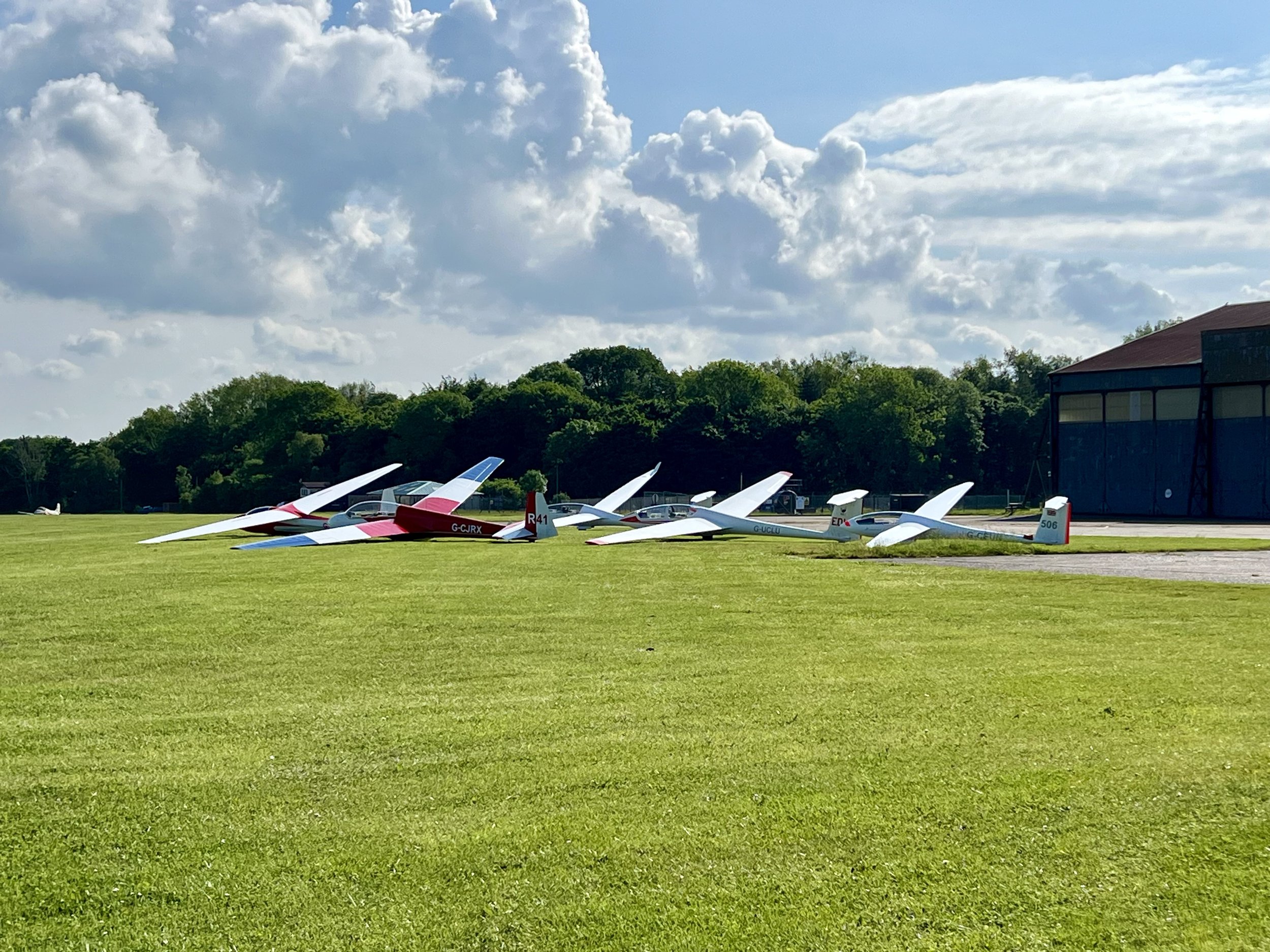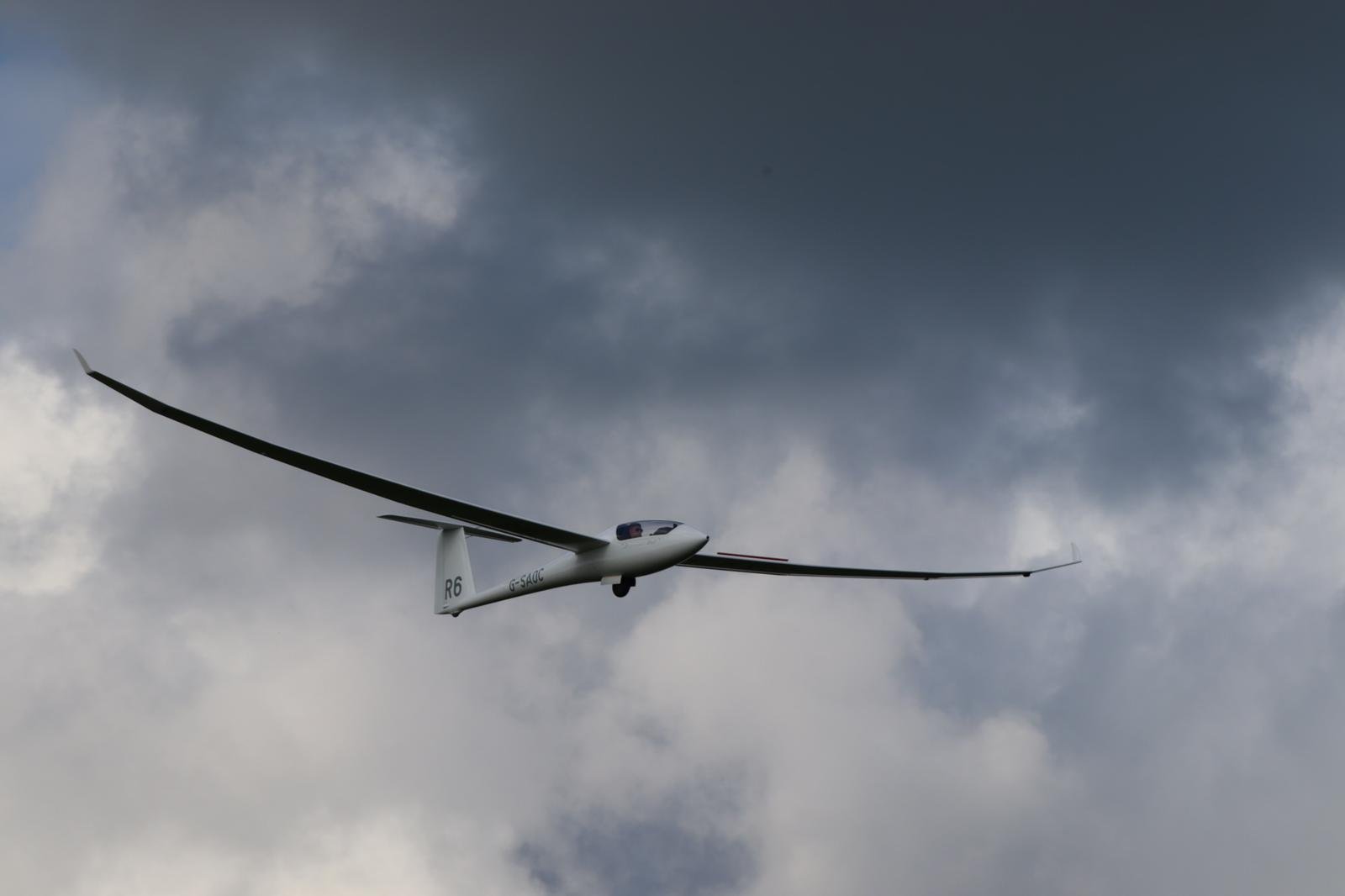
OUR FLEET
Our fleet is our backbone. We are extremely fortunate to possess a rich variety of glider types that allow our members to carry out diverse flying activities. You will be hard-pressed to find such a well-equipped gliding club anywhere else in the country.
-

Schleicher ASK 13: G-CJRX “R41”
The K13 is the predecessor to the K21 and is a two-seater, basic trainer that stalls and spins well, making possible all the exercises in the gliding syllabus. It is made from a mix of metal, wood and glassfibre, with fabric covered wings and rudder. It has a fixed undercarriage, a wingspan of 16m, a glide ratio of 28:1 and a maximum speed of 108 knots.
-

Schleicher ASK 21: G-CKGK"R28"
The K21 is a modern, two-seat ab-initio training glider and is a superb, all-round aircraft in which to carry out trial flights, flight training and aerobatics. It is made of glass-reinforced plastic (GRP). It has a fixed undercarriage, a wingspan of 17m, a glide ratio of 34:1 and a maximum speed of 151 knots.
-

Schleicher ASK 21: G-UCLU "EDW"
We are the host club for the University College London Gliding Club, who also own an ASK 21. It is, in fact, the oldest one in the country - manufactured in 1970, it is still going strong! All club members have access to this glider when it is not being used by UCL.
-

Schleicher ASK 18: G-CJKG “R48”
The K18 is an early-solo, single-seat glider with docile handling characteristics. This will be the first single-seater you will fly and in which you may attempt your first cross-country and duration flights. Similar to the K13, it is made of metal, wood and fabric. It has a fixed undercarriage, a wingspan of 16m, a glide ratio of 34:1 and a maximum speed of 109 knots.
-

Grob G102 Astir CS: G-CJSD "R77"
R77 is an early, glass fibre, single-seat glider with docile handling characteristics. Affectionately referred to as the concrete swan, it is a reliable glider in which you will develop your soaring skills. It has a retractable undercarriage, a wingspan of 15m, a glide ratio of 38:1 and a maximum speed of 130 knots.
-

ASW 19B: G-CHXU "HXU"
We are the host club for the University College London Gliding Club, who own an ASW 19B. It is a glass fibre, single-seat glider with pleasant handling characteristics. It has a retractable undercarriage, a wingspan of 15m, a glide ratio of 38:1 and a maximum speed of 138 knots. All club members have access to this glider when it is not being used by UCL.
-

Schempp-Hirth Discus CS: G-CEUN "506"
506 is a higher performance, single-seat glider used by many people to develop their solo gliding and cross country skills. 506 has recently been refinished and undergone a complete instrument upgrade to include the LX9000 and a transponder. It is made from glass-reinforced plastic around a steel tube frame. It has a retractable undercarriage, a wingspan of 15m, a glide ratio of 43:1 and a maximum speed of 135 knots.
-

Schempp-Hirth Discus 2cT: G-SAOC “R6”
R6 is our highest performance, single-seat glider utilised for long distance cross country flights. It can be flown in either 15m or 18m wingspans and possesses a small sustaining engine to stay airborne and return to the airfield when conditions deteriorate. It has undergone an instrument refit to include the LX9070 and a transponder. It is made from glass-reinforced plastic, it has a retractable undercarriage, a glide ratio of 42:1 or 46:1 depending on the wingspan and a maximum speed of 140 knots.
-

Schempp-Hirth Duo Discus XT: G-SAXT “26”
26 is our high performance, two-seat cross country glider equipped with a small sustaining engine. The Duo is available to develop our pilots’ cross-country skills. It is fully kitted out with LX9000s and a transponder, has a retractable undercarriage, wingspan of 20m, a glide ratio of 46:1 and maximum speed of 142 knots.
-

Scheibe SF-25 Turbo Falke: G-SASF
SF is a two-seat motor glider with a 115hp turbo-charged engine. It is available for pre-solo handling training, pre-Bronze navigation training, field landing checks, towing our gliders into the air and general aviation flights.
